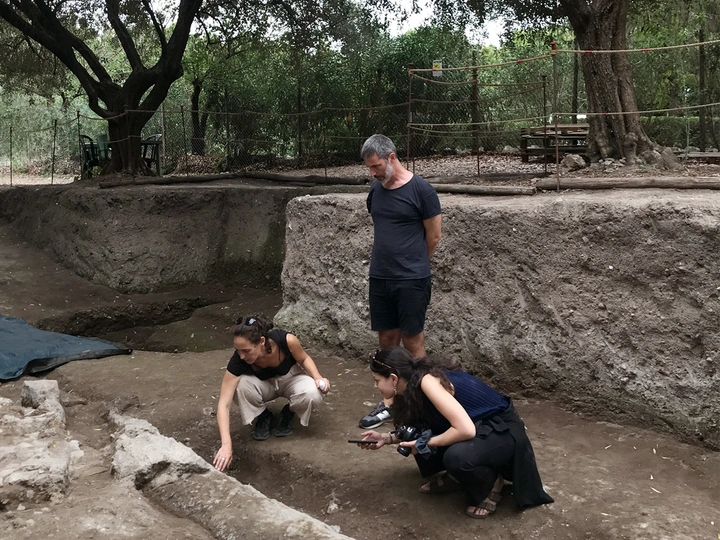Soil-telling

Marina Pasia
Alexandros Tsonidis
Un/common Soil is a collaborative platform of one archaeologist and two architects sharing their roots in Mediterranean culture. Setting a common ground during the EMJMD in Architecture, Landscape and Archaeology they work and research together a mediation among cultural heritage and contemporary society, developing innovative design strategies for Heritage Sites enhancement and dissemination. They utilise the tools and languages of scientific and creative disciplines to interpret and transmit meaningful stories to contemporary communities.
Francesca Romana Fiano (Rome, 1986), is a PhD in Archaeology and research fellow in Ferrara University. Being an academic and activist balances her pleasure in diving into deep knowledge, bringing it up to real life. The excavations are her natural environment where every layer is a new page of collective history, and material culture is the toolbox to engage communities into narratives about human-nature relationships. Dedicated to knowledge sharing, collaborates with artists and architects.
Marina Pasia (Limassol, 1992), is a researcher at CYENS Centre of Excellence. Architect and heritage scientist, is specialised in intervening through design in historical/archaeological landscapes in different contexts for the enhancement of their cultural and social values. She has a strong interest in participatory design practices, social engagement and co-creation recognising their pivotal role in creating inclusive urban spaces that resonate with communities.
Alexandros Tsonidis (Athens, 1983), an architect and heritage scientist based in Athens and Napoli, is a co-founder of ATYP Architects, an innovative practice situated in Athens. Passionate for urban and landscape design, each project becomes a transformative journey, challenging architectural norms through research and creative experimentation. He has been involved in community participatory design initiatives and urban regeneration projects for the municipality of Athens.
Trampled, occupied, removed, investigated, sifted, neglected—what lies beneath our feet is a generative resource that we often overlook. It is a common and critical resource that preserves, hides, reveals and regenerates the surface where millennia of human generations have lived. The soil provides resources that shape the reality surrounding us, giving rise to places and territories through architecture and objects that have evolved over time in countless configurations.
Soil-telling is a cross disciplinary framework grounded in our common interest in making sense of the past for contemporary life, using memory as a tool to plan strategies for the future. Disclosing the implicit knowledge the soil deposit keeps, Architecture and Archaeology become both our investigative tools and narrative devices disseminating knowledge about human-nature relationship over time.
We embrace geology, natural phenomena, historical events, landscapes, ruins, and objects to uncover heritage and develop narratives that shape design processes. Our framework also involves artistic and crafting practices. By bridging gaps between seemingly opposed disciplines, a common language is under development to reach meaningful interpretations of places and material culture. These synergies for collaboration re-activate the dormant value of cultural heritage.
Soil-telling aims in unearthing narratives and visualising stories to impact how people observe and interpret the phenomenon of spatial and temporal coexistence of patterns of inhabitation. Scientific research, concept development, mappings, visualisations, and installations are the techniques and mediums to examine multi-layered sites. By fostering strong site-specific concepts that convey meaningful heritage to communities, our vision is to extend the "Soil-Telling" framework into new terrains and continue to reveal untold stories, guiding future generations towards a more sustainable and inclusive relationship with their environment.